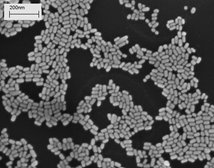Oct 22 2010
Researchers at the MIRA Institute for Biomedical Technology and Technical Medicine, University of Twente, The Netherlands, are developing a method of detecting and treating tumors with the help of gold particles with dimensions measure in mere nanometres. The underlying concept is that proteins (antibodies) can be attached to miniscule particles of gold. The antibodies ensure that the gold particles come into contact with a tumor. They can then be detected, or used to destroy the tumor.
It will be some time before the method can be used clinically, but the researchers have recently made several important scientific breakthroughs, says researcher Srirang Manohar. He and his colleagues have already published three scientific papers on their research this year.

The ultimate goal of the research being carried out by Srirang Manohar and Ton van Leeuwen of the Biomedical Photonic Imaging Group is to use gold nanoparticles to detect and destroy tumors. To do so they use miniscule gold rods of around fifty nanometres long: less than one thousandth of the thickness of a human hair. Antibodies are attached to the gold rods, and these ensure that the gold particles bond with tumor cells. The gold particles that adhere to a tumor make it possible to detect the tumor with the help of existing photoacoustic techniques. And because the gold particles heat up quickly when infrared light is shone on them, they are able to destroy the tumors.
This stage has not yet been reached, however. There are still a number of major scientific hurdles to be cleared. Several important conditions have to be met to make the technique a success. For example, the gold rods have to be synthesized in such a way that they absorb light of the correct wavelength, can be easily detected, are packed so that they are not harmful to the body, and stay in the body long enough to have an effect. Some of these scientific hurdles have now been cleared with the help of research projects that have been published this year in leading scientific journals.
The gold rods have a tendency to stick together. To prevent this, a layer of CTAB (cetyl trimethylammonium bromide) is immediately added to the particles at the production stage. However, this material is damaging to the body, because it also kills healthy cells. The MIRA researchers have replaced this harmful layer with harmless polyethylene glycol (PEG). This material does not only prevent the gold rods from forming clumps, it also means that they remain 'invisible' to the immune system for a time, so that they have the opportunity to locate and adhere to tumour cells. The MIRA researchers have also carried out the first large-scale investigation showing that the particles remain in the body long enough to be used for the detection and/or destruction of cancer cells.